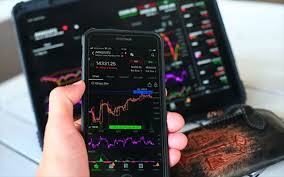Your Guide to the Remaining Relative Visa in Australia

Bringing families together is at the heart of Australia’s immigration policies. If you are the last remaining member of your family and your close relatives live in Australia, the Remaining Relative Visa might be the right pathway for you. Designed for people who have no other near relatives living outside Australia, this visa ensures you can reunite and live permanently with your loved ones.
In this guide, we’ll explore the details of the Remaining Relative Visa Australia, including both Subclass 115 and Subclass 835, the processing time, eligibility criteria, and the role of a remaining relative visa agent in Brisbane.
What is the Remaining Relative Visa?
The Remaining Relative Visa is a permanent visa designed for individuals whose only close family members (parents, siblings, or children) are living in Australia as citizens, permanent residents, or eligible New Zealand citizens.
There are two subclasses under this category:
-
Remaining Relative Visa Subclass 115 – for people applying from outside Australia.
-
Remaining Relative Visa Subclass 835 – for people applying while they are in Australia on another valid visa.
Both visa types allow the applicant to live permanently in Australia, work and study without restrictions, and apply for Australian citizenship when eligible.
Who Can Apply for a Remaining Relative Visa?
To qualify for either subclass, you must:
-
Not have any close family members living outside Australia.
-
Be sponsored by an eligible relative who is an Australian citizen, permanent resident, or eligible New Zealand citizen.
-
Meet Australian health and character requirements.
-
Have someone (usually your sponsor) provide an Assurance of Support.
-
Not have any other relatives (parents, siblings, children) who live outside Australia and are not Australian citizens or permanent residents.
If you’re unsure about your eligibility, consulting a remaining relative visa agent in Brisbane can provide clarity and expert guidance.
Subclass 115 – Remaining Relative Visa (Offshore)
The Remaining Relative Visa 115 is suitable for applicants who are currently outside Australia. It allows them to move to Australia permanently and reunite with their family.
Key Requirements:
-
You must be outside Australia when applying and when the visa is granted.
-
Must be sponsored by an eligible relative living in Australia.
-
Assurance of Support is required.
Once granted, Subclass 115 provides full work rights, Medicare access, and the ability to apply for citizenship later.
Subclass 835 – Remaining Relative Visa (Onshore)
If you are already in Australia on another valid visa, you can apply for the Remaining Relative Visa Subclass 835.
Key Requirements:
-
You must be in Australia at the time of application and when the visa is granted.
-
Must be sponsored by a close family member.
-
Must not have other close relatives living overseas.
Both subclasses have nearly identical conditions. The key difference lies in whether you apply inside or outside Australia.
What is the Remaining Relative Visa Processing Time?
Due to the limited number of visa places available each year under the Family stream, Remaining Relative Visa processing times are significantly longer compared to other visa types.
As of the latest information, the processing time can be:
-
10+ years or more for both Subclass 115 and Subclass 835.
Yes, the wait can be incredibly long. These visas are in low priority, so applicants must be prepared for extensive delays. This long processing time makes the role of a remaining relative visa agent in Brisbane even more critical—they can help you prepare a flawless application to avoid unnecessary delays.
How a Remaining Relative Visa Agent in Brisbane Can Help
Navigating the application process alone can be overwhelming, especially with long waiting times and strict documentation requirements. That’s where a Remaining Relative Visa agent in Brisbane becomes invaluable.
Here’s how they can help:
-
Eligibility Assessment – ensuring you meet all the criteria before lodging your application.
-
Document Preparation – helping you compile the necessary identity, relationship, and financial documents.
-
Sponsorship Support – guiding your family sponsor through their part of the process.
-
Lodgement Accuracy – avoiding mistakes that could lead to rejection or processing delays.
-
Ongoing Updates – keeping you informed about changes in immigration policy and visa caps.
A registered migration agent can reduce your stress, improve your application quality, and give you the best shot at a successful visa outcome.
Tips to Improve Your Application
-
Ensure Complete Documentation – Incomplete applications lead to long delays or rejections.
-
Maintain Contact with Your Sponsor – Their role is crucial in supporting your application.
-
Avoid Visa Breaches – If you’re applying for Subclass 835 from within Australia, don’t violate any visa conditions.
-
Seek Professional Advice – Migration law changes frequently. Expert advice keeps your application up to date.
-
Be Prepared for Long Waits – Mentally and financially prepare for a potential 10+ year wait.
Final Thoughts
The Remaining Relative Visa Australia is a heartfelt visa pathway designed for individuals who have no other close family members outside Australia. While the process is complex and the Remaining Relative Visa processing time is long, the reward is a permanent reunion with your family in one of the world’s most livable countries.
Whether you’re considering applying from overseas (Remaining Relative Visa 115) or within Australia (Remaining Relative Visa 835), getting expert help from a Remaining Relative Visa agent in Brisbane can be your best decision. Their expertise not only ensures that your application is complete and accurate but also offers peace of mind through a very lengthy immigration journey.




